[Note: I posted this first on Sept 26, after which another article (read it here) about this appeared on the CBC website. This caused me to update/amend various bits of the post on Sept 28, which you will see below. ]
A union, any union, is just another LBO, and so those in charge do what those in charge of any LBO do – stop behaving like sensible human beings. They become organization people, whose primary mission is the maintenance of the LBO and hence, of course, their own positions.
The faculty at The University of Western Ontario are ‘represented’ by UWOFA, a local union not directly affiliated with the Teamsters or CUPE or any other national labour organization, as are some unions at Western. I think it is affiliated with CAUT, the Canadian Association of University Teachers, and I think some of one’s union dues to UWOFA get shoveled up to CAUT. This faculty unionization at Western happened in the oughts, I voted against it back then, but having seen it happen anyway, was sure that it meant the end of good working conditions at Western. In fact, it took awhile for that expected deterioration in things to happen, in large part because there were enough reasonable faculty (including a couple of my Econ Dept colleagues) who were willing to serve in important union positions (like negotiating and salary committees) to keep things from going entirely off the rails immediately.
All those reasonable folks eventually got old and retired, like me, so the Union was becoming more and more unreasonable by the time I retired. A story on the Sept 26 CBC-London website (read it here) makes it clear that UWOFA has moved into full LBO posturing mode.
If you didn’t already know, CUPE local 2361, which includes caretakers, groundskeepers and many other folks tasked with keeping UWO running, walked off the job on Aug. 30 after contract negotiations with the university broke down. They remain on strike as I write this.
The Sept 26 story headline and sub-headline from CBC was as follows:
Western faculty flag ‘critical safety violations’ amid strike, launches complaint to province
Infractions include: Eyewash stations, safety equipment not being tested and asbestos found in old buildings
If you had read this CBC story early enough, the first thing you would have seen was the photograph below, with the caption below that:

“Some students at Western University say they have seen full garbage and recycling bins on campus since facilities employees walked off the job on Aug. 30. It’s prompted the university’s faculty association to launch a complaint with the province. (Kendra Seguin/CBC)”
So, ‘some students’ have said they have seen full trash bins, but apparently the intrepid CBC reporting team, including photographer Seguin, couldn’t find a trash bin that was actually full, so they took and published the photo above. That doesn’t look staged at all, does it?
A picture is worth a thousand words – just maybe not the words intended.
If you wondered ever if the CBC thinks we’re all fools, their publishing that photo and caption perhaps provides some evidence. However, eventually someone must have pointed out to someone at the CBC that this photo and caption was rather embarrassing, journalistically speaking, and it is no longer part of the story if you go read it now.
There are other photos, which I will get to in a minute.
The article’s sub-title raised some questions for me, as follows –
1.How do UWOFA people know that things have not been inspected or tested? Are they going around and checking? Interesting work for faculty to be doing, if so, but even if they are, how does a professor of Sociology know if a fire extinguisher or eyewash station has been inspected or tested?
2. Who ‘found’ this asbestos in old buildings? Are UWO faculty also going around buildings removing drywall and checking for asbestos? I mean, if there is asbestos in old buildings (and there certainly is in some, including the building in which I used to work) it has been there since the building was constructed. It all was certainly there before the CUPE strike, so just what does it have to do with said strike?
Well, as to 1, there are new photos in the story, taken apparently by UWOFA members, so yes, faculty really are spending their time on this – or UWOFA is paying someone else to take them, I suppose. Here’s one below, showing a station behind a glass case that holds a fire hose and fire extinguisher.

The point being that there are initials on the red sticker dated up to July, but not August or September. So what we can infer is that no one has come by and put their initials there. What does that certify? Well, that no one has come by to check that the equipment hasn’t disappeared. You don’t ‘test’ a fire extinguisher or fire hose, right? In the case of the extinguisher, that renders it useless, and in the case of the fire hose, it makes one hell of a mess.
Here’s another photo from the new and improved CBC story:

Well, someone wearing jeans and sneakers is apparently putting a new plastic liner in a plastic garbage can. I don’t know how UWO faculty can possibly concentrate on their work knowing such things are going on, possibly in the same building in which they are working.
But wait, there’s more –
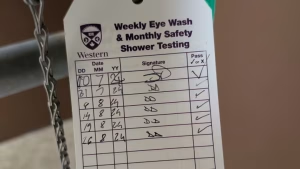
So, there is indeed an eye wash and safety shower which may have not been tested since the 16th of August. That doesn’t mean the station doesn’t work, of course, but no one has put an initial on that card since then.
[Amendment: The more recent CBC story includes the following statement from the UWO administration:
A spokesperson for the university said weekly checks of eyewash stations inside labs are the responsibility of lab staff, not CUPE 2361 employees.
Thus, if indeed these stations are not being checked and tested, it has nothing to do with the CUPE strike. I wonder who UWOFA may have gotten into hot water over this photo?]
But wait, there’s still more. Another quote from the story:
The faculty union also said HVAC systems in student residences are malfunctioning and replacement workers aren’t wearing adequate personal protective equipment.
How does the faculty union know what is happening in student residences, and who among these dedicated faculty guardians of safety is aware of what ppe is required by workers in any particular situation?
Here are two clarifying quotes from UWOFA’s stalwart president:
“For a replacement worker, the difference between a sneaker and a safety shoe is very significant when a heavy or sharp object falls on their foot,” said UWOFA president Johanna Weststar.
Ah, of course, this is about UWOFA’s concern for the replacement workers.
She is further quoted –
“A malfunctioning eye wash station could mean blindness for faculty, staff or students who work with hazardous substances. Western works because CUPE workers do. We need them back now.”
It could, indeed. Here’s a crazy idea, but stay with me on this. Suppose UWOFA members who go into a room or lab in which there is an eye wash station or shower check to see if it is working before they begin their class or lab work. You know, turn it on, and see what happens. Now, I know that would be doing the work of a member of another union, a definite Solidarity No-No, but….it would prevent, you know, blindness from happening.
That crazy idea aside, this last quote does kinda indicate what is really going on – UWOFA is trying to put pressure on the Administration to settle with the striking CUPE members. More precisely, they are trying to get a provincial minstry to put pressure on UWO to settle. I have no doubt having CUPE on strike is a pain in the ass for faculty, but it is of course never going to happen that UWOFA tries to put pressure on the strikers themselves, or good ol’ CUPE, to settle. Solidarity, right?
So, this is posturing by UWOFA to try to get something they want – the Admin to settle with the CUPE workers. I am no friend of the UWO Admin, I think the place was and continues to be incredibly badly run, but I think UWOFA is just as badly run, and does not in any sense operate in the interests of most faculty members. It was a tossup in my last years working whether it was the Admin or UWOFA that did the most to make my working life unpleasant.
I will close with one last bit of the CBC story. Another quote attributed to UWOFA:
The faculty union said it’s “alarmed by the potential for asbestos exposure in older buildings, where water and steam leaks occur frequently and require special precautions that may not have been properly communicated to replacement contractors.”
Ah, so those ‘special precautions’ that are required ‘may not have been properly communicated to replacement contractors’. Indeed, they may not have been. Or, maybe they were, it doesn’t sound as though UWOFA actually knows, does it?
But, being fair to UWOFA, it is unlikely anyone within UWOFA actually claimed to have ‘found’ asbestos in old buildings. That wording at the beginning of the story is almost surely pure CBC, devoted as ever to accurate reporting.
[Amendment: The later CBC story includes this quote from the UWO Admin:
“There is no reason to suggest that asbestos-related hazards have increased during the current strike – and the University is not aware of any contracted employees exposed to any hazardous conditions,” said Ledgley.
As I wrote, asbestos has been known to be in some UWO buildings for years – this has nothing to do with the present CUPE strike.
Again from the UWO Admin, quoted by CBC:
“In the unusual circumstance that asbestos abatement work was necessary, it would be conducted by individuals properly trained in asbestos work with proper personal protective equipment and the worker would be monitored by Workplace Health.”]
I suspect none of this posturing by UWOFA’s leaders is going to have an impact on the Provincial Ministry of Labour, and thus on the duration of the strike, but I suppose one shouldn’t blame an LBO for trying.
[Amendment: I was just wrong on this. The more recent CBC story includes this:
The ministry told CBC News on Thursday that it received two health and safety complaints from the university on Sept. 24, and has assigned an inspector to investigate.
“The ministry prioritizes worker health and safety, enforcing the Occupational Health and Safety Act to ensure compliance. While the investigation is in progress, we cannot provide further details,” a spokesperson told CBC News in an email.
The ministry is indeed investigating. I look forward to what happens next, and whether this has any impact on the duration of the strike. I suppose I should say ‘Well played, UWOFA’, but I’ll wait to see what actually comes of all this.]
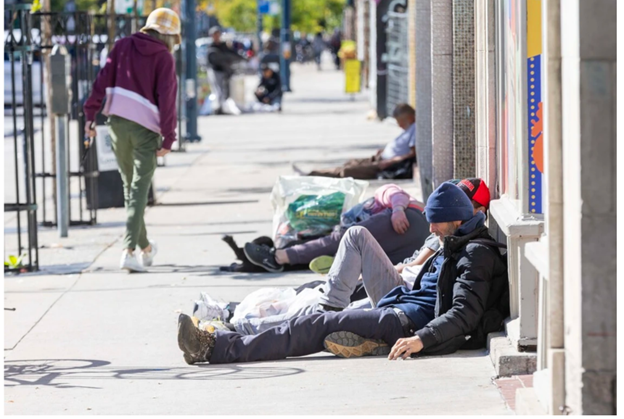
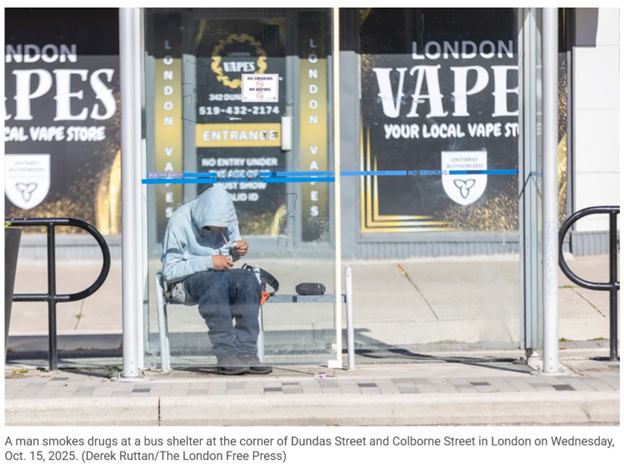
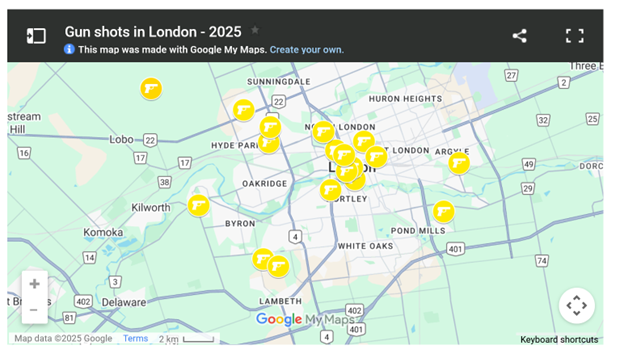
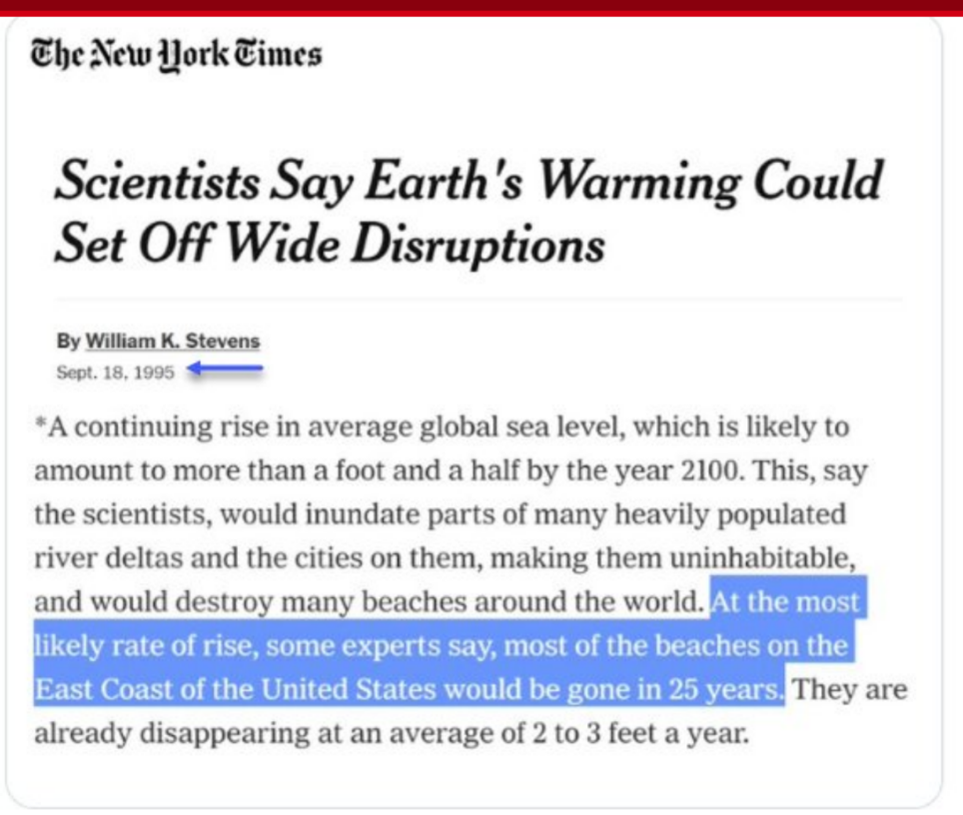

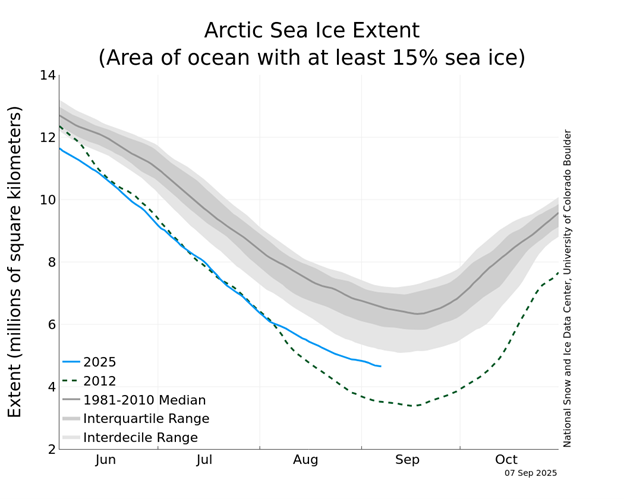

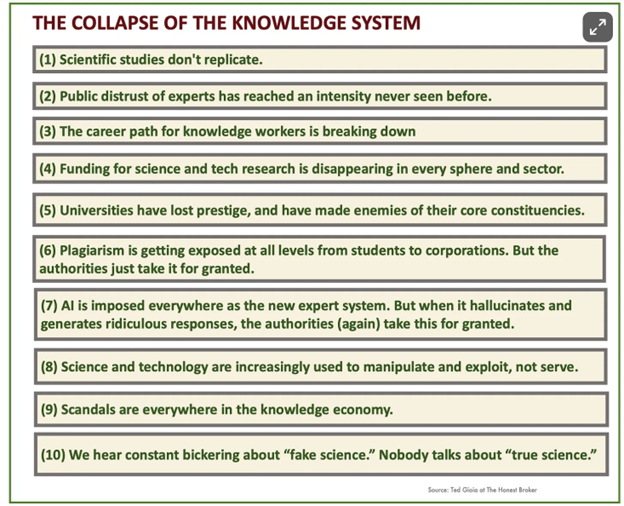
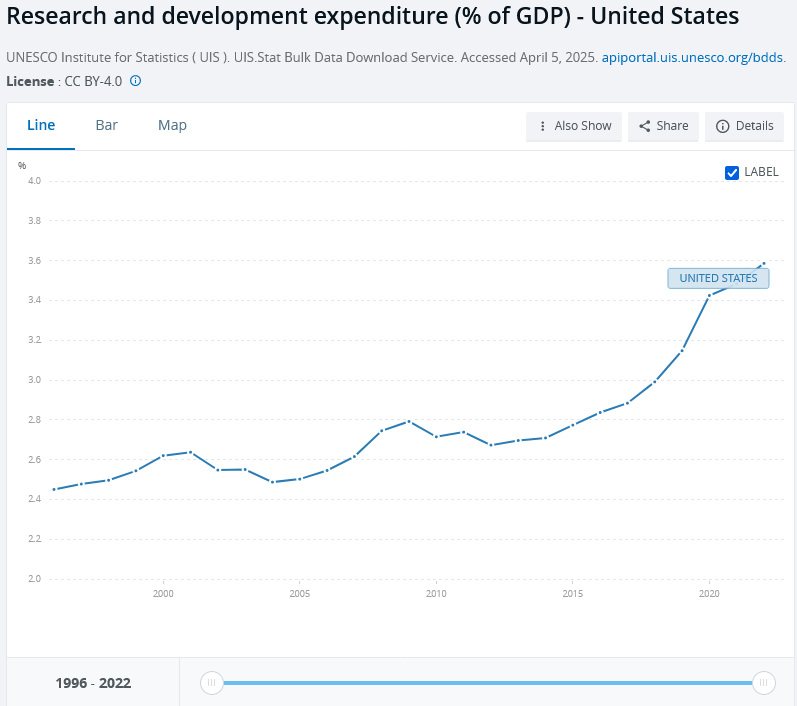
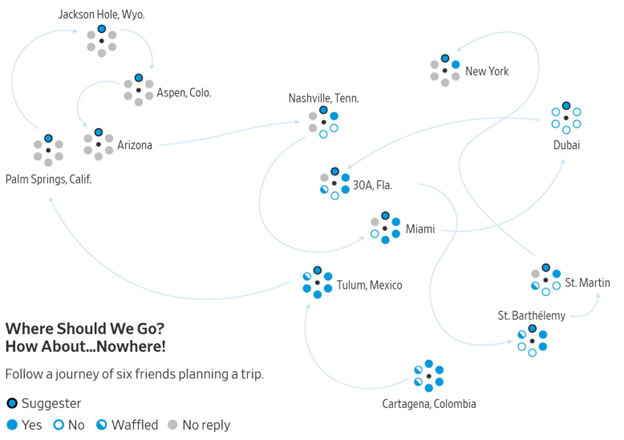
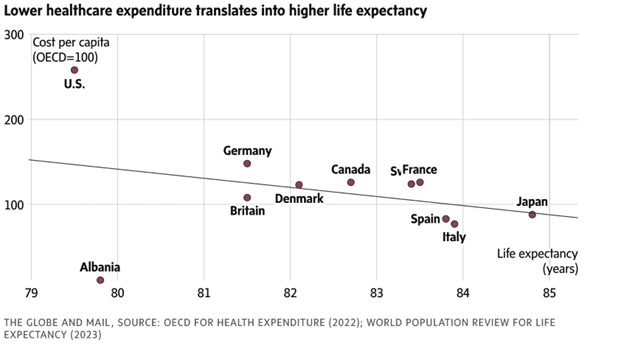

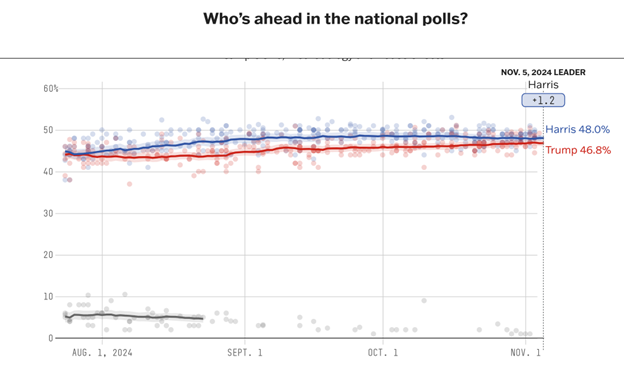
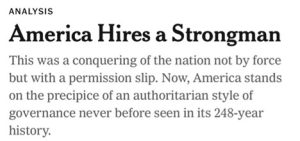
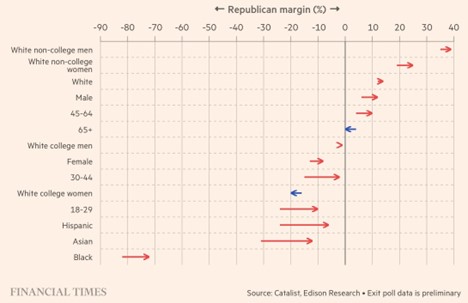





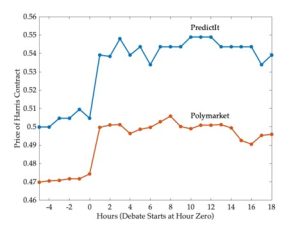
 The above paragraph makes the research of Pluchino and colleagues seem like it is about real people, living ’40-year working-age lifespan(s)’, right? And, it seems that for these ‘people’ it turned out that the ‘most talented people’ were not generally the ones to achieve ‘the pinnacle of wealth’. Rather it was those people with good luck who did well.
The above paragraph makes the research of Pluchino and colleagues seem like it is about real people, living ’40-year working-age lifespan(s)’, right? And, it seems that for these ‘people’ it turned out that the ‘most talented people’ were not generally the ones to achieve ‘the pinnacle of wealth’. Rather it was those people with good luck who did well.